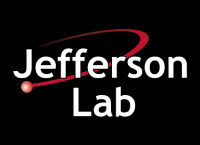Noah asks :"What is the speed of light?"
The speed of light is 3 x 10 8 (or 300 million) meters per second, or over 186,000 miles per second (or 670 million miles per hour)! Now, that's just a number, which is hard to get a feel for, so think of it this way... if you flew in a commercial airliner from the earth to the sun, and started out when you were born, you'd graduate from high school about the same time you reached the sun! But if you traveled at the speed of light, you'd be there in just over 8 minutes! Now that's fast!
E.T asks : "Do you handle mercury?"
No, we do not use mercury in the Test Lab. Mercury is a hazardous substance, and while it has numerous industrial uses, we do not utilize it in any of our processes or activities. In general we try to reduce the amounts and kinds of dangerous chemicals and substances that we use in performing our work, and will substitute a less hazardous material, even if it is more expensive, in order to reduce the risk to our staff, the public, and the environment.
Liam Slinde asked : "What is the byproduct of the accelerator beam and where does it stop?"
The accelerator beam interacts with targets in the experimental halls. Few of the electrons in the beam actually "collide" with nuclei in the target materials (and therefore "scatter" out from the interaction point) - the remainder come to rest in a "beam stop", a large iron and concrete block, which absorbs the energy of the electrons, and prevents them from escaping from the experimental hall.
Tom Hilliard asks : "What is the over all objective of the accelerator?"
Particle accelerators are used by physicists in much the same way as biologists use a microscope - to look deep into the structure of microscopic entities, and learn how they are put together and function. A biologist uses a microscope to look at the structures of cells and tissues, while a physicist uses an accelerator (which provides a beam of high energy particles, instead of light) to "look" at the structure of the nuclei of atoms. The CEBAF accelerator provides an energetic beam of electrons that are used as probes to study the constituents of the nuclei of atoms (protons and neutrons, and the quarks of which they are composed). This is done by colliding them with targets made of metal or liquid gases (such as helium or hydrogen). By measuring the energies, momenta, and angles by which these incident electrons are scattered, we can discover the mechanisms that bind the quarks together in a proton or neutron. In this way we hope to further our understanding of how matter behaves. To do this efficiently, the accelerator must provide electrons at a certain energy (chosen by the nuclear physics experimenters), and also provide enough of them so that the physicists can get lots of data. The accelerator must operate in a reliable fashion, with minimal downtime, so that the experimenters don't waste their time here without any beam.
At Jefferson Lab, the CEBAF accelerator can continuously produce a beam of electrons with energies up to almost 6 billion electron volts, and runs for 24 hours a day, 7 days a week, for periods lasting many months.


